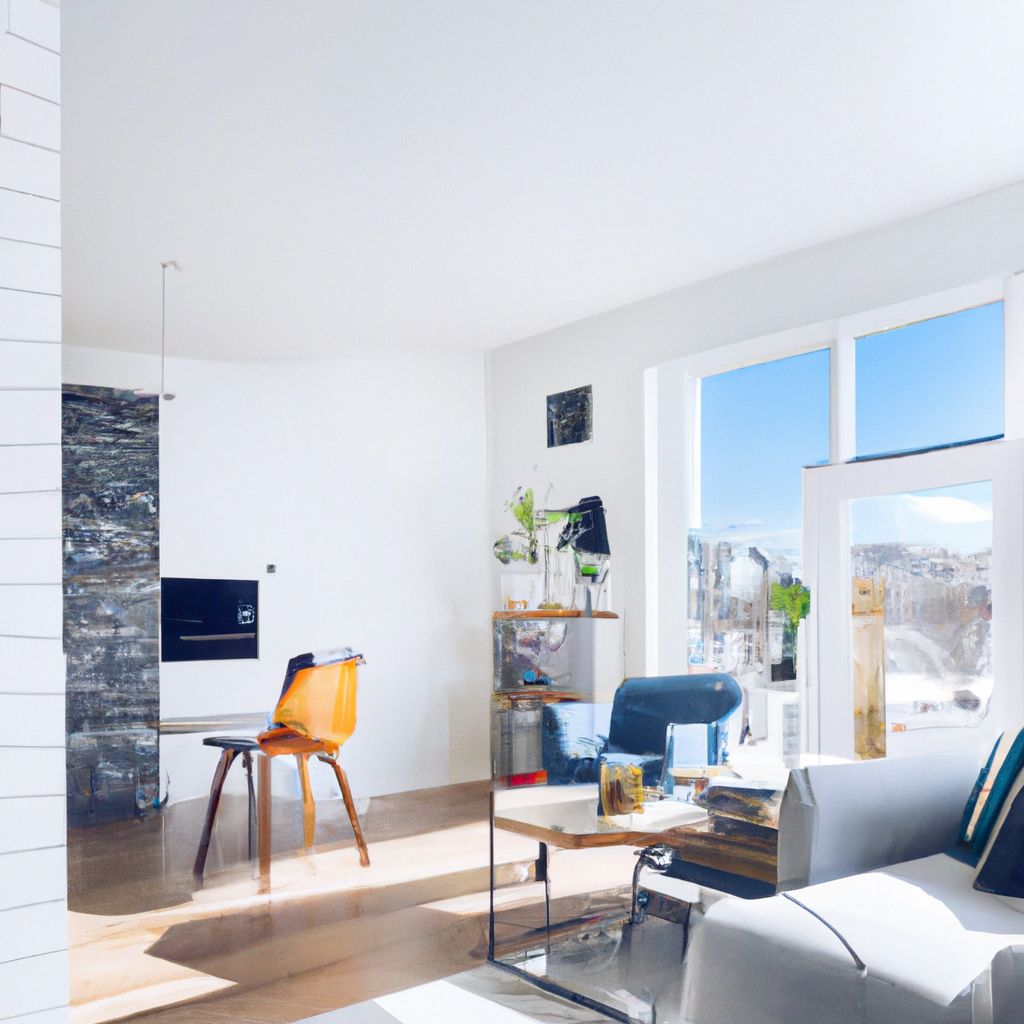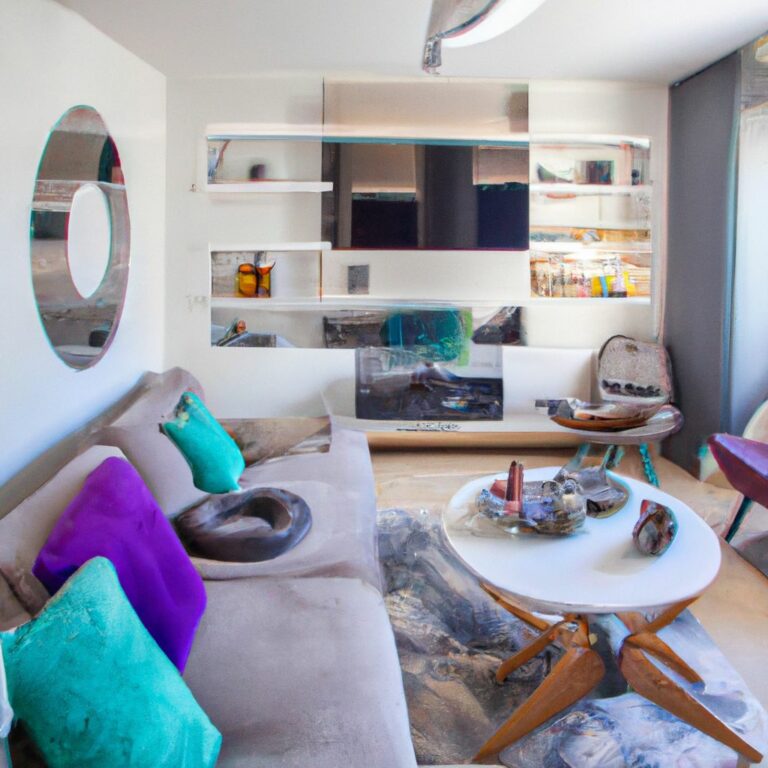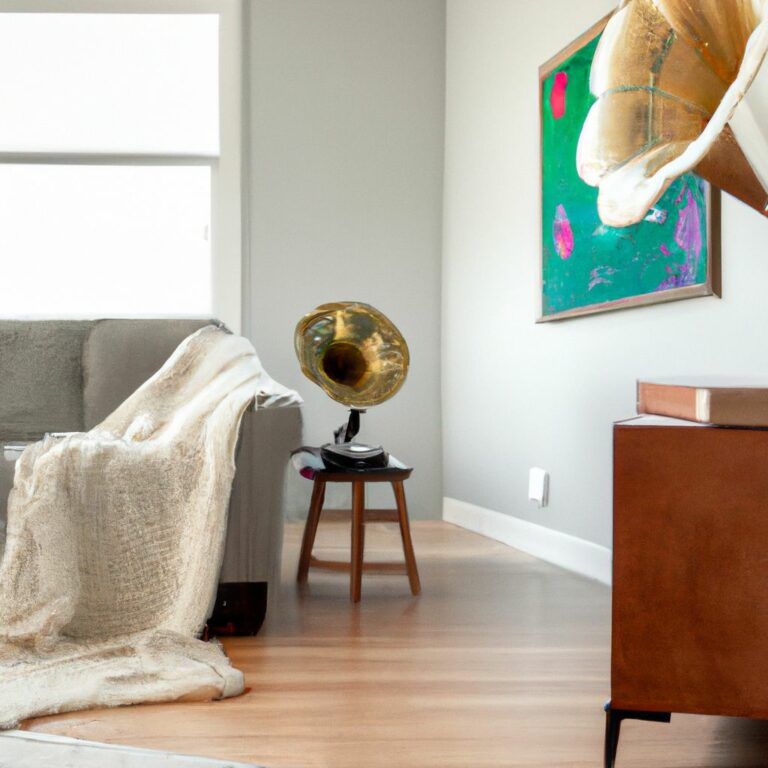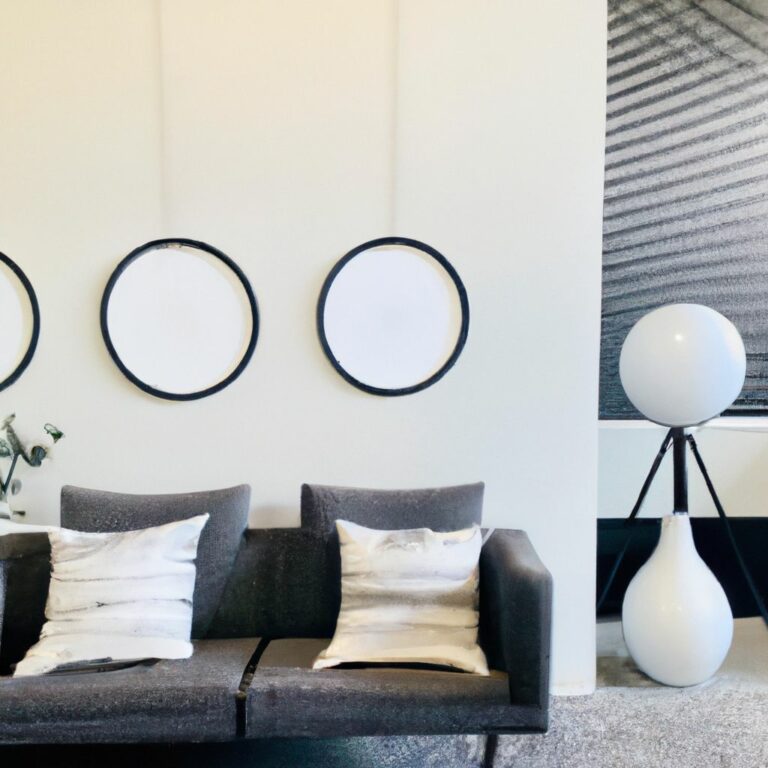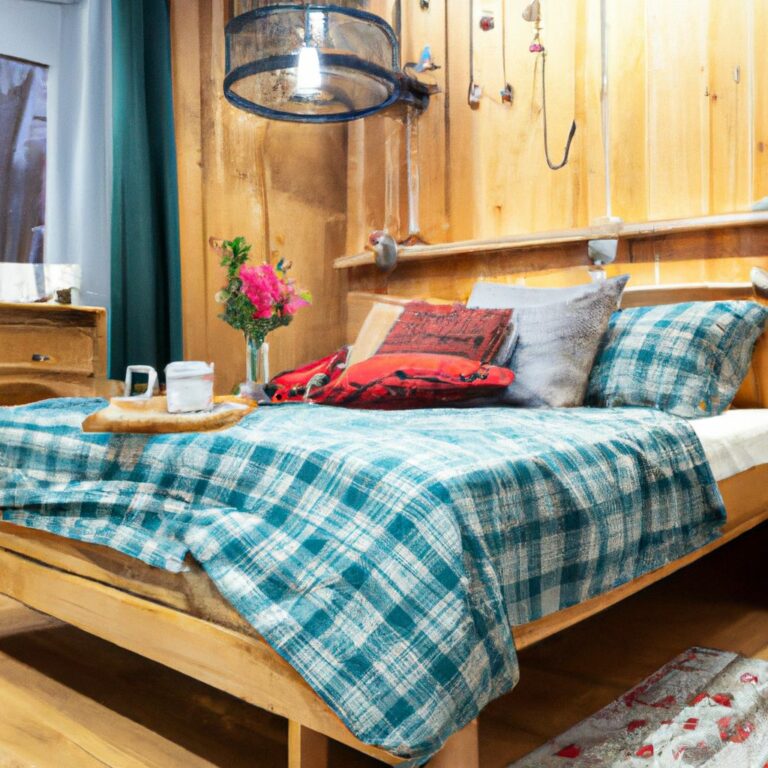Introduction: Understanding the Challenges of Decorating Large Spaces
When it comes to decorating large spaces, it’s all about striking a balance between function and form. Furniture pieces should be proportional to the room and arranged in a way that maximizes comfort and style. Incorporating different textures and patterns can add depth and dimension to the space.
The color scheme also plays a major role in defining the ambiance of a large space. Consider lighter shades for walls to create an illusion of openness, but don’t be afraid to add a few bold colors for a touch of vibrancy.
Lighting is also essential for accentuating large spaces. A combination of ambient, task, and accent lighting can create a warm atmosphere while highlighting certain areas or architectural features.
To illustrate the challenges of decorating large spaces, consider the story of Sarah, an interior designer from New York City. She had to transform an expansive loft into a cozy home while avoiding an overwhelming feeling of emptiness. Through her creativity and expertise, Sarah overcame this challenge using multifunctional furniture pieces, clever storage solutions, and art installations. In the end, the loft was transformed into a beautiful and inviting space that embraced the room’s dimensions.
Utilizing Furniture Arrangement to Maximize Space
To maximize space in your large home, utilize furniture arrangement techniques. Strategically place your furniture for a balanced layout that enhances the aesthetics and functionality of the room.
Strategically Placing Furniture for a Balanced Layout
Maximizing space and creating a balanced layout requires strategic furniture placement. Here are 4 tips to consider:
- Create a focal point: Put the biggest piece of furniture, like a sofa or bed, against the longest wall.
- Arrange for traffic flow: Leave room between pieces of furniture for easy movement and accessibility.
- Group furniture: Pair related pieces together to create designated areas.
- Balance proportions: Consider the size of each furniture piece in relation to the room.
Unique details can also be added to the layout. Use mirrors to reflect light and make the room look bigger. Add vertical storage solutions like shelves or hanging organizers to use space without cluttering.
Pro Tip: Experiment with different furniture arrangements until you find one that optimizes space and creates an appealing balance. Trust your instincts and consider both functionality and aesthetics. Who needs walls when you can divide a large space with color and furniture?
Using Color to Create Visual Divisions in Large Spaces
To create visual divisions in large spaces using color, employ color-blocking techniques for different areas.
Employing Color Blocking Techniques for Different Areas
Forget statement pieces – color blocking is the way to go! Use a table and assign different colors to each cell. This can create distinct divisions in your workspace, like desk, storage, and seating areas.
Remember: Color blocking is not just about looks. Consider their functionality too. Calming blue tones in relaxation areas? Check. Vibrant colors in active or social spaces? Got it!
Pro Tip: Pick a cohesive color palette and use it throughout the space. This will create a unified look and a harmonious visual flow. Go wild with color – neon green walls anyone?!
Incorporating Statement Pieces to Add Visual Interest
To incorporate statement pieces and add visual interest to your home decor in large spaces, consider showcasing large artwork or sculptures as focal points. These eye-catching elements can instantly transform a room, making a bold and captivating statement. By strategically placing and highlighting these art pieces, you can enhance the overall aesthetic appeal and create a visually stunning environment.
Showcasing Large Artwork or Sculptures as Focal Points
Large artwork or sculptures make for stunning focal points that captivate and inspire. They can bring scale and grandeur to a space, sparking conversations and providing unique textures and colors. These pieces not only enhance the aesthetics, but also contribute to the functionality of a space.
For example, Michelangelo’s iconic masterpiece, ‘David’, is a remarkable example of showcasing large artwork or sculptures as focal points. This colossal statue stands proudly in Florence’s Galleria dell’Accademia, enthralling millions of visitors each year with its beauty and craftsmanship. It elevates the status of the museum and creates an awe-inspiring experience for all who behold it.
Let there be light, so bright that even your sunglasses need sunglasses!
Enhancing Lighting Options for a Bright and Airy Atmosphere
To enhance lighting options for a bright and airy atmosphere in your large space, consider mixing different light sources for ambient, task, and accent lighting. This clever approach will provide practical and aesthetic solutions to create a well-lit and visually appealing environment.
Mixing Different Light Sources for Ambient, Task, and Accent Lighting
Mixing light sources is key for a bright and airy atmosphere. Strategically blend ambient, task, and accent lighting to enhance the space’s aesthetic. Consider these three types:
| Ambient Lighting | Task Lighting | Accent Lighting |
|---|---|---|
| General illumination, warm atmosphere. | Focused lighting for tasks such as reading or cooking. | Highlights decorative features, focal points. |
| Chandeliers, ceiling or wall lights. | Desk lamps, under-cabinet or track lights. | Recessed spotlights, picture lights, wall-mounted fixtures. |
Each type of lighting has a different purpose. Ambient sets the mood. Task lighting ensures visibility. Accent lighting draws attention to architectural or artistic elements.
The art of blending light sources has been used throughout history. From palaces to modern living rooms, it has evolved.
Mix light sources to create a captivating atmosphere. Ambient for an inviting ambiance. Task for work areas. The possibilities are endless. Define functional zones for a bright idea. Zone out for it!
Creating Functional Zones to Define Different Areas
To create functional zones and define different areas in your large space, utilize room dividers or area rugs. These solutions help in establishing clear boundaries, improving organization, and enhancing the overall aesthetics. With room dividers or area rugs, you can effortlessly transform a vast open space into distinct and purposeful sections.
Utilizing Room Dividers or Area Rugs to Establish Zones
Divide a room into functional zones with room dividers or area rugs. These elements not only separate different areas, but also add style and visual interest.
- Room dividers: Use folding screens, bookshelves, or even curtains. Strategically place them to create zones without permanent walls.
- Area rugs: Place rugs of different sizes and patterns to visually separate spaces. For example, a large rug under the dining table can delineate between living and dining zones.
- Combine both: Maximize effectiveness with room dividers and area rugs. For instance, use a bookshelf as a divider between home office and living room; then place an area rug beneath the desk.
Tips:
- Place items purposefully to promote efficiency.
- Maintain style with colors, patterns, or themes.
- Consider traffic flow with furniture and other elements.
- Finally, don’t forget the ‘organized chaos’ zone!
Incorporating Vertical Elements to Optimize Vertical Space
To optimize vertical space in your home decor, incorporate vertical elements like shelves or tall bookcases. These additions will not only provide you with extra storage and display options but will also add a sense of height to the room.
Installing Shelves or Tall Bookcases for Added Storage and Display
Mirror, mirror on the wall, who needs space when I have you to make it all? Shelves and tall bookcases are a great way to use the wall space that’s often overlooked. They store and organize lots of stuff – books, decorations, knick-knacks, even clothes!
Further, they draw the eye upwards, making the room look bigger and airier. Adjustable shelves or modular units offer customization to fit items of various sizes. Plus, you can personalize your shelving arrangement with plants, art pieces, and stylish baskets.
Optimizing your vertical space with shelves and bookcases not only declutters, but also makes it look more attractive. Make the most of your wall area and express your unique style and personality!
Incorporating Mirrors to Create an Illusion of Space
To create an illusion of space with mirrors, strategically placing them is key. Reflecting light and creating depth are two techniques that can enhance your home decor in large spaces.
Placing Mirrors Strategically to Reflect Light and Create Depth
To get the most out of mirrors, place them opposite windows or other sources of natural light. Larger mirrors tend to create a greater sense of depth, while elongated shapes can expand a room’s dimensions. Try layering different sizes and shapes for added interest. Incorporate mirrored furniture or accessories to enhance the illusion of space. Place mirrors near focal points to draw attention and give a sense of depth. To open up smaller rooms or hallways, install mirrored wall panels.
Combine these techniques with appropriate lighting and color schemes for an even more remarkable effect. Mirrors brighten up darker areas and create interesting light and shadow plays. Throughout history, many civilizations used mirrors for practical and aesthetic purposes. Ancient Egyptians and Romans placed mirrors to reflect sunlight and adorned their houses with glass tiles respectively. The perfect size accessories are like finding the perfect pair of shoes – too small and it’s uncomfortable, too big and it’s a tripping hazard.
Selecting Properly Sized Decorative Accessories and Textiles
To create a visually striking and balanced home decor in larger spaces, select the right-sized decorative accessories and textiles. Choose oversized decorative accessories for visual impact, along with other sub-sections that you will discover in the following discussion.
Choosing Oversized Decorative Accessories for Visual Impact
Make a strong statement in your home decor with oversized decorative accessories. These larger-than-life pieces can totally change the look of a room. Add drama and impact with a big sculpture, statement vase, or oversized wall art.
Be sure to pick the right size for the room. Balance the size of the pieces with the furniture and decor. Choose accessories that match the theme of the room for extra impact.
My friend recently used a giant abstract painting as the center of her living room. It added a ton of vibrancy with its bold colors. It transformed her living room into an art gallery.
Choose the right sized decorative accessories and create a unique style. Let your creativity shine and make the most of the visual impact in every room. Although I don’t have much space, I still manage to fit all my accessories in until it looks like stylish Tetris.
Conclusion: Mastering Home Decor in Large Spaces
Home decor for large spaces calls for planning and execution. Furniture must fit the room without taking it over. Divide the area into zones to create balance and purpose. Make a statement with oversized art or dramatic lighting. Color and texture add warmth and welcome. Pro Tip: Rugs and room dividers create intimate seating in open-concept spaces.
- Easy DIY home decoration projects - June 25, 2023
- Upcycled items for home decor - June 25, 2023
- Vintage home decor ideas - June 25, 2023
